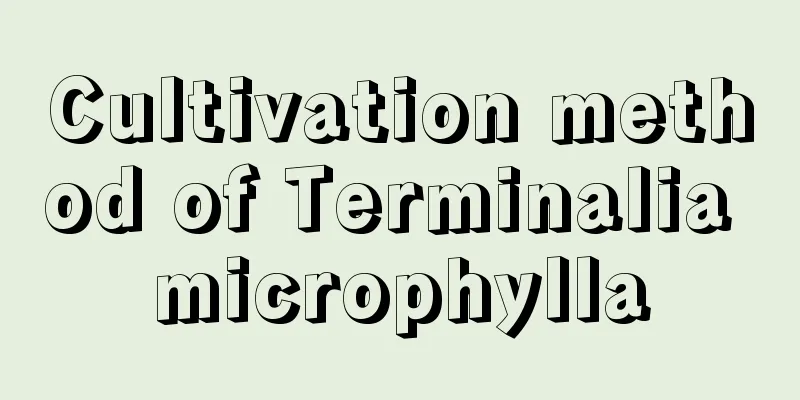Ginger planting, cultivation and management technology

|
Ginger , belonging to the genus Zingiberaceae, is a perennial herbaceous vegetable . The rhizome is plump and flat, with an aromatic and spicy taste, and is an indispensable condiment in our daily diet. Ginger likes a humid environment, so the soil needs to be kept moist during the growing period. The suitable temperature range for growth is generally 20-30 degrees Celsius. Let’s learn about the planting, cultivation and management techniques of ginger. 1. Suitable planting time for ginger Ginger likes a warm environment. Ginger pieces need a higher temperature to grow. They can germinate above 16-18℃ and develop rapidly at 20-27℃. The most suitable temperature for rhizome division is 24-29℃. Growth stops below 15℃ and ginger pieces are prone to rot below 10℃. The planting time of ginger should be determined according to local temperature changes, and the suitable planting time varies in different regions. In warm areas, it is best to sow in early to mid-March; in mild areas, it is best to sow after mid-April; in cool areas, it is best to sow in early May. The cultivation by mulching with mulch film can be started in advance. 2. Ginger cultivation method 1. Land selection Ginger has a small root system and a small distribution range, and requires deep, fertile, and loose soil. Choose fertile and loose loam or sandy loam, and avoid sticky and moist low-lying land and barren land with poor water retention. Ginger should not be planted continuously and needs to be rotated with other vegetables for more than three years to prevent ginger blight. 2. Land preparation and fertilization Ginger grows vigorously but has a small root system, so it requires deep plowing and exposure to the sun, and sufficient base fertilizer. Apply 2,500 kg of decomposed organic fertilizer, 50-100 kg of cake fertilizer, and 50-100 kg of phosphate fertilizer per mu. 3. Ginger seed processing Choose ginger pieces with flat shape, good color, short and thick internodes, and no diseases or insect pests as seeds, and use 150-250 kg of seeds per mu. Disinfect the seeds by soaking them in wood ash solution or Bordeaux mixture. After 2-3 days of sun exposure, the ginger skin will turn dry and white before germination. Keep moist in a room at 20-30℃. After 20 days, take out the cut pieces, with 1-2 buds in each piece, and sow the seeds. There are two methods of ginger cultivation: high-bed cultivation and strip-ridge cultivation. When sowing, the buds should face upwards and be covered with 5-6 cm of soil to allow the seedlings to emerge as soon as possible. 3. Ginger management methods Shade: Ginger likes shade. After sowing, set up a sunshade when the seedlings are about 17 cm tall and remove it in autumn. Water and fertilizer management: During the growth period of ginger, topdressing should be determined according to the growth trend, for a total of 2-4 times, following the principle of light fertilizer first and then heavy fertilizer, combined with inter-row cultivation and weeding. Intertillage and weeding: Ginger likes loose soil. During the growing period, intertillage and weeding should be carried out 2-3 times, combined with soil cultivation. Soil cultivation: The underground part of ginger has the habit of growing upward, so it needs soil cultivation frequently. Combined with tillage, weeding and topdressing, soil cultivation should be done 3-4 times to increase soil temperature and prevent waterlogging and root rot. Prevention and control of ginger blight: implement crop rotation for more than three years, select disease-free ginger seeds, disinfect seed blocks, dig drainage ditches, promptly remove diseased plants in the center, spread lime for disinfection, and spray with 50% mancozeb solution after the disease occurs. Through the above methods, the yield and quality of ginger can be effectively improved. However, the specific planting methods need to be adjusted according to local climate, soil conditions and market demand.
|
<<: Garlic planting, cultivation and management technology
>>: Spinach planting, cultivation and management technology
Recommend
Cultivation methods and precautions of colored calla lily
1. Water It is necessary to water the colored cal...
How to make lilies grow short and strong? What to do if they grow too tall?
1. How to grow short and strong 1. Maintenance an...
The best time to break off leaves of succulent plants
1. The best time to break off leaves The best tim...
How to plant sugarcane (introduction to planting technology)
1. Select sugarcane sprouts When planting, sugarc...
Peony flower habits
1. Like warmth Peonies prefer to grow in a warm e...
What vegetables are suitable to grow in September?
What vegetables are suitable to grow in September...
How and when to plant pumpkin
Gourd planting time and month The sowing time of ...
How to propagate dogtooth flower by cuttings
Time for cuttings of dogtooth flower The propagat...
When do five-color plum, Jiangxi wax plum and bougainvillea bloom?
Five-color plum blossom season The flowering peri...
How to identify hybrid chrysanthemums
1. Plants Hybrid medallion has underground stems,...
The difference between Ligustrum lucidum and Ligustrum lucidum
1. Appearance (1) First, the difference in pedice...
Does camellia need to be fertilized after it blooms (what fertilizer is best to apply when the buds turn red before blooming)
Do you need to fertilize flowers after they bloom...
How to grow cantaloupe
1. Maintenance methods 1. Temperature: Muskmelon ...
How to grow the Master Green Cashmere Succulent
The leaf flesh of the succulent plant Green Cashm...
The difference between iris and iris
The difference between iris and iris flowers Flow...









